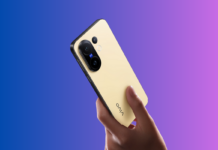Yesterday, the upcoming Oppo Find X8 Pro Satellite Communication Version phone was spotted with the highest-ever score on AnTuTu benchmarks. The Dimensity 9400-powered smartphone achieved an impressive score of 2,880,550. Now, the Vivo X200 Pro Satellite Communication Version has emerged in AnTuTu’s database. This phone, which also features the Dimensity 9400 SoC, has broken the Find X8 Pro’s record by breaching the 3 million points mark for the first time on AnTuTu.
Vivo X200 Pro Satellite Communication Version AnTuTu listing

Vivo Product Manager Han Boxiao shared the above screenshot to reveal the AnTuTu performance of the Vivo X200 Pro Satellite Communication Edition. The Dimensity 9400-powered device achieved an impressive score of 3,007,853 points. This makes it the first smartphone in the industry to surpass the 3 million points milestone on AnTuTu.
To be precise, the impressive score has been achieved by the 16GB+1TB variant of the X200 Pro Satellite Communication Version. Breaking down the scores, it recorded 652,381 points in the CPU test, 1,322,761 points in the GPU test, 521,453 points in the memory test, and 511,258 points in the UX test. These scores highlight the device’s peak performance across all metrics, setting a new benchmark for flagship smartphones.
The Dimensity 9400 is scheduled to launch on Oct. 9 in China. The X200, X200 Pro, X200 Pro Mini, and X200 Pro Satellite Communication Version will be the first phones to feature the D9400 chip. According to reports, the chipset built using TSMC’s 3nm process is equipped with one 3.63GHz Cortex-X925 ultra-core, three 2.8GHz Cortex-X4 cores, and four 2.1GHz Cortex-A7 series cores. The Cortex-X925 alone offers a 36 percent performance boost and a 41 percent increase in AI capabilities compared to its predecessor.
For graphics, the Dimensity 9400 is integrated with the Mali-G925-Immortalis MC12, which introduces hardware-level ray tracing technology. This upgrade results in a 20 percent improvement in ray tracing performance, a 37 percent boost in graphics performance, a 52 percent increase in handling complex information, and a 34 percent enhancement in AI and machine learning workloads, all while reducing power consumption by 30 percent.








Comments